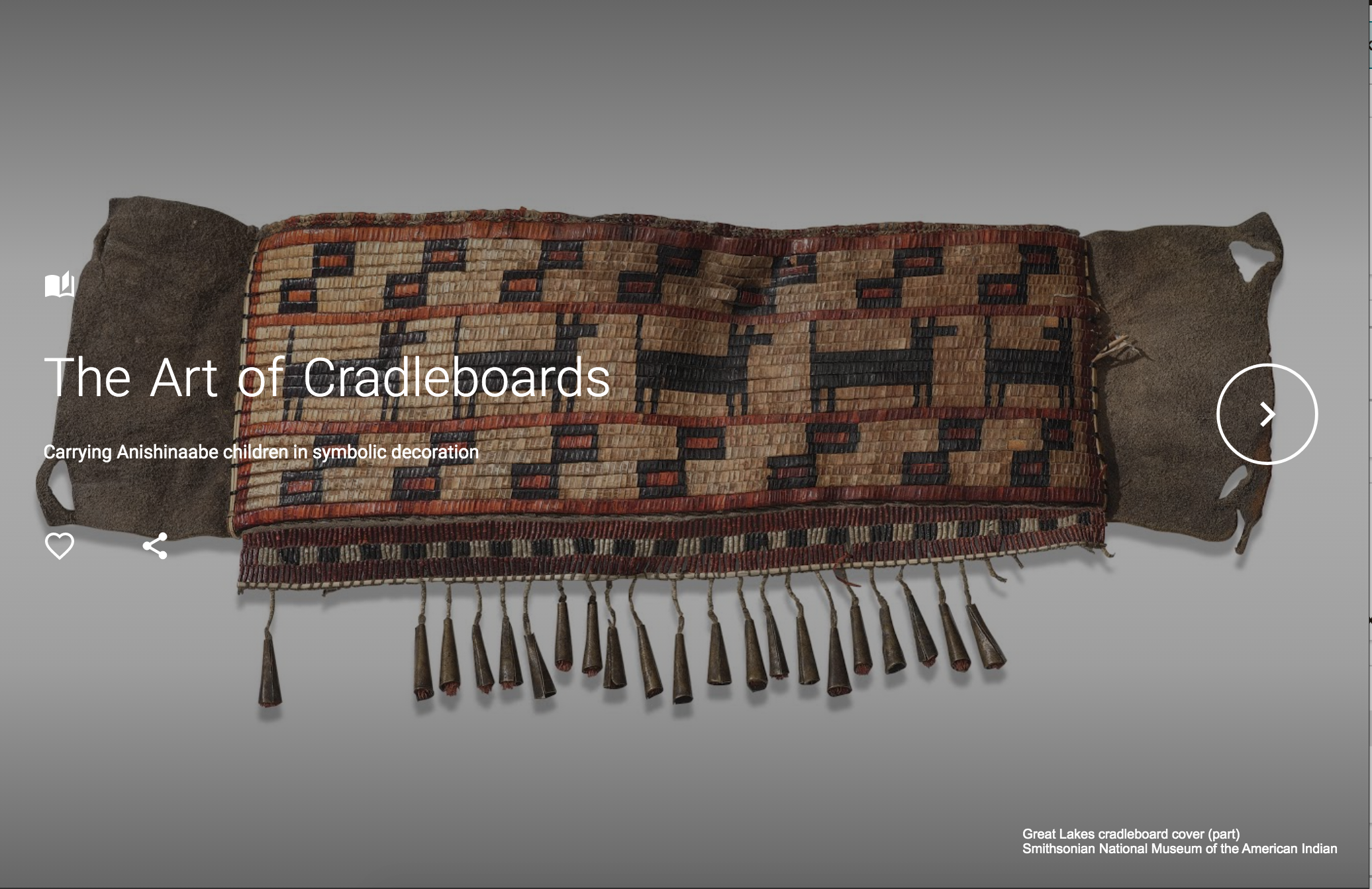Teach This Poem, though developed with a classroom in mind, can be easily adapted for remote learning, hybrid learning models, or in-person classes. Please see our suggestions for how to adapt this lesson for remote or blended learning. We have also noted suggestions when applicable and will continue to add to these suggestions online.
-
Warm-up (pair share): (Teachers, before class, please ask your students to bring in two or three lines from their favorite songs. Just in case students forget, it might be helpful to keep a few sets of current popular song lyrics on hand that students can use for this activity.) Join with a partner and share the lines from your favorite songs. Share what makes these songs meaningful.
-
Before Reading the Poem: View the interactive exhibition from the Smithsonian Museum of the American Indian about one cradleboard here. Feel free to take your time closely reading the captions and viewing the zoomed-in images of the cradleboard. Share one thing that you learned with a partner.
-
Reading the Poem: Read the poem “America, I Sing Back” by Allison Adelle Hedge Coke silently. What do you notice about the poem? Annotate for any words or phrases that stand out to you or any questions you might have.
-
Listening to the Poem (enlist two volunteers to read the poem aloud): Listen as the poem is read aloud twice, and write down any additional words and phrases that stand out to you. You may opt to listen to the poet read the poem aloud twice here. Call back the lines that you like by saying these lines aloud with your classmates.
-
Small-group Discussion: Share what you noticed in the poem with a small group of students. Based on the exhibition you viewed at the beginning of class and your own reading, what do you think that the speaker’s relationship is to the “her” in the poem? Why?
-
Whole-class Discussion: What is the tone in the poem? Why? What does the speaker want? Why? (Teachers, if you feel like your students could use more context, Hedge Coke discusses this poem here.)
-
Extension for Grades 7-8: Write a collaborative, exquisite corpse poem that begins and ends with this line from the poem: “America, I sing back. Sing back what you sung in.” What is it that you want to say? (Teachers, you could do this as an interactive whole-class assignment where students each add one line to create a class poem, or you could ask your students to work in groups to add lines.) Or, in honor of Native American Heritage Month, read more Native American and indigenous poets here. Create a classroom anthology here; choose one poem from the anthology and make a collage of that poem.
-
Extension for Grades 9-12: Read more poems or American “songs” here. After reading these three poems, pick three other poems or songs that connect in some unique way and explain what these poems or songs have in common. Then, write your own song about your American experience. Or, in honor of Native American Heritage Month, read more Native American and indigenous poets here and use this map here to learn what Native land you live on. Research this Native land and share your findings with the class.
In this 2019 interview, U.S. Poet Laureate Joy Harjo says, “I always tell my students about poetry ancestors. Every poem has so many poetry ancestors. How can we construct a poetry ancestor map of America that would include and start off with poetry of indigenous nations?” Read more.

